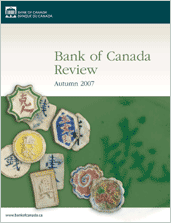Bank of Canada Review - Autumn 2007
Available as:
PDF
Cover page
Siamese Gaming Tokens
The tokens pictured here are part of the National Currency Collection, Bank of Canada.
Photography by Gord Carter, Ottawa.
